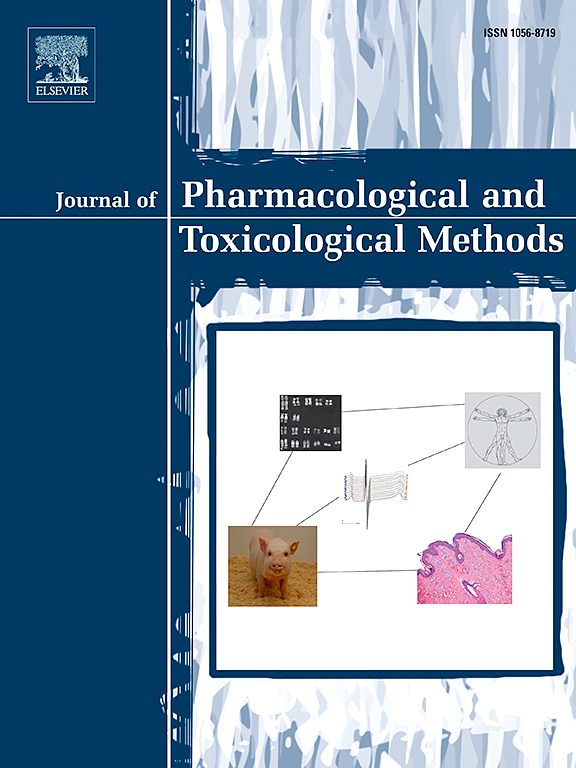模式生物秀丽隐杆线虫化学毒性筛选的高含量细胞成像。
IF 1.3
4区 医学
Q4 PHARMACOLOGY & PHARMACY
Journal of pharmacological and toxicological methods
Pub Date : 2025-05-17
DOI:10.1016/j.vascn.2025.107756
引用次数: 0
摘要
使用动物模型筛选环境化学品的毒性是确定对人类的潜在危害的重要一步。由于大量的环境化学物质具有未知的生物活性,在过去的几十年里,高通量筛选一直是毒性测试的主要方法。然而,随着多种细胞靶点的出现,这些靶点已被证明会受到化学物质的不利影响,向高通量筛选的过渡,包括高含量分析,提供了一系列尖端的实验优势。在这里,我们利用遗传模式生物秀丽隐杆线虫来展示如何利用美国ToxCast化学文库利用高含量筛选来鉴定RNA剪接的新化学修饰剂。通过这种半自动化的工作流程,我们强调了现代高含量筛选平台在高通量筛选分析中提供优势的领域,这些优势改进了传统方法,以最大限度地收集定量和定性数据类型。本文章由计算机程序翻译,如有差异,请以英文原文为准。
High-content cell imaging for chemical toxicity screening in the model organism Caenorhabditis elegans
The use of animal models for screening environmental chemicals for toxicity is an important step towards determining potential hazards to humans. Due to the large number of environmental chemicals with unknown biological activity, high-throughput screening has served as the primary method in toxicity testing for the past decades. However, with the emergence of diverse cellular targets that have been shown to be adversely affected by chemicals, a transition towards high-throughput screening that incorporates high-content analysis provides an array of cutting-edge experimental advantages. Here, we utilized the genetic model organism Caenorhabditis elegans to demonstrate how high-content screening can be utilized to identify new chemical modifiers of RNA splicing with the U.S. ToxCast chemical library. Through this semi-automated workflow, we highlight areas where modern high-content screening platforms provide advantages that improves on traditional methodology in high-throughput screening assays to maximize quantitative and qualitative data types collected.
求助全文
通过发布文献求助,成功后即可免费获取论文全文。
去求助
来源期刊

Journal of pharmacological and toxicological methods
PHARMACOLOGY & PHARMACY-TOXICOLOGY
CiteScore
3.60
自引率
10.50%
发文量
56
审稿时长
26 days
期刊介绍:
Journal of Pharmacological and Toxicological Methods publishes original articles on current methods of investigation used in pharmacology and toxicology. Pharmacology and toxicology are defined in the broadest sense, referring to actions of drugs and chemicals on all living systems. With its international editorial board and noted contributors, Journal of Pharmacological and Toxicological Methods is the leading journal devoted exclusively to experimental procedures used by pharmacologists and toxicologists.
 求助内容:
求助内容: 应助结果提醒方式:
应助结果提醒方式:


